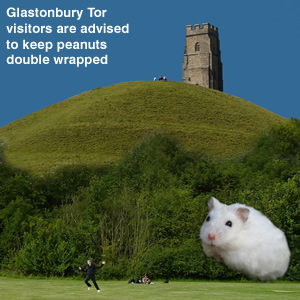Faced with the challenge of choosing the right food for this year’s Mystical Ball, the UK’s Mystical Ambassador, Sir Terry Prichardson, turned to the Food Science Department at the Mystical University of Glastonbury.

Sir Terry explained: “When I was appointed UK Mystical Ambassador, I moved the embassy to Glastonbury because of its superior travel connections and its position at a key intersection of the ethereal realm. As a result, the UK’s mystical embassy is the only embassy located within the UK—after all, with Glastonbury’s proximity to the astral plane, there’s no need to set up shop anywhere else. Only after opening the embassy did I realise how valuable the university’s research facilities would be to us.”
Sir Terry continued: “Obviously, there are the standard staples for a party at the Mystical Ambassador’s Lodge—Lembas and Kendal Mint Cake—but we felt it might be nice to add something a little more sugary. That’s when we happened upon the idea that Ferrero Rocher might do the trick. But the question was: are they mystical enough?”
Chair of Food Science at the Mystical University of Glastonbury, Gordon Qualm, explained: “We were delighted when the Mystical Ambassador approached us for guidance on Ferrero Rocher’s suitability as a mystical party food. Our research quickly showed that while they are entirely non-mystical in their retail packaging, if you arrange them in a pyramid on a suitable surface—such as a plate—they take on a surprisingly mystical quality, entirely appropriate for a classy mystical gathering. Our only stipulation was that the Mystical Embassy’s Diabetic Support Team be on hand at all times.”





